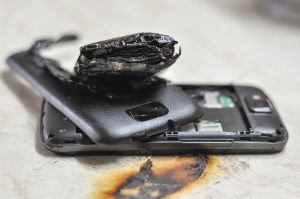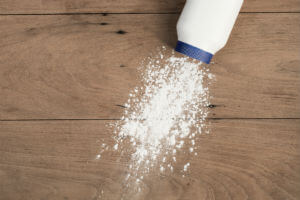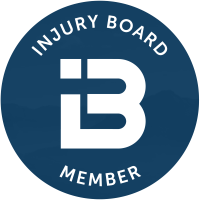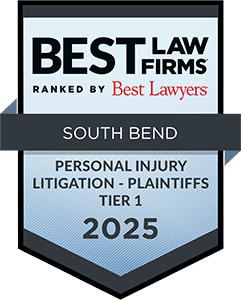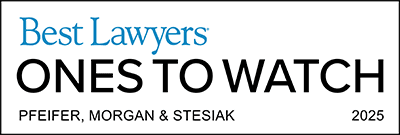 Property damage and personal injury caused by consumer product issues cost the U.S. more than $1 trillion every year, according to the Consumer Product Safety Commission. When a product defect is discovered that poses a safety risk, recalls help prevent further injury.
Property damage and personal injury caused by consumer product issues cost the U.S. more than $1 trillion every year, according to the Consumer Product Safety Commission. When a product defect is discovered that poses a safety risk, recalls help prevent further injury.
However, if a consumer is harmed by a defective product, the manufacturers can be held financially responsible for any injuries resulting from the defective item. The South Bend product liability lawyers at Pfeifer, Morgan & Stesiak have represented many innocent victims who have been injured by items with design flaws and production defects. We can discuss your case during a free, no-obligation case review, and we only get paid if you receive compensation for the injuries or losses caused by the defective product.
Below are the steps to get a product recalled.
1. A Consumer Complains
Most product recalls begin when a consumer files a complaint – usually after he or she has been harmed by a product. Complaints are filed with one of the following agencies:
- United States Consumer Product Safety Commission (CPSC) – The CPSC is responsible for monitoring more than 15,000 types of consumer items used in homes, schools and sports.
- United States Food and Drug Administration (FDA) – The FDA regulates food, medicine and other products used for the body, including medical devices, vaccines, cosmetics, pet food, tobacco products and prescription medications.
- United States Department of Agriculture (USDA) – The USDA receives recall requests pertaining to meat, poultry and eggs via a subdivision called the Food Safety and Inspection Service.
- United States Environmental Protection Agency (EPA) – The EPA receives reports regarding defective products that pose a risk to the environment.
- National Highway Traffic Safety Administration (NHTSA) – This agency receives reports pertaining to defective automobiles and automotive parts.
- United States Coast Guard – This agency is responsible for monitoring reports regarding boats and watercraft.
In addition to consumer complaints, recalls may also begin when a governmental agency informs another agency about a problem. For example, a state inspection of a food manufacturing facility may uncover a problem and report it to the USDA. A state health department may report a problem to the FDA. The Centers for Disease Control and Prevention may contact the FDA if it receives a report regarding a foodborne illness.
2. The Agency Investigates the Complaint
The appropriate agency then begins an investigation into the issue. It may inspect other products in the same shipment or lot that the defective product was part of. Other products may undergo multiple rounds of testing. Each agency has specific procedures in place to determine when a recall is warranted and how the recall is approached.
FDA
The FDA recalls products that are harmful, defective or not compliant with FDA rules or regulations. It uses a three-tier system to determine the seriousness of a complaint:
- Class I – The product has a reasonable likelihood of causing severe health risks or even death.
- Class II – The product may cause temporary harm or harm that can be reversed through medical treatment, and it poses only a “remote” chance of causing severe injury or death.
- Class III – The product is unlikely to harm the consumer but violates FDA regulations.
USDA
The USDA recalls meat, poultry or eggs that are considered unfit for human consumption or mislabeled. The USDA also uses a three-tier approach to measure the seriousness of a consumer complaint:
- Class I – The food may harm or kill the consumer, as determined by a reasonable probability.
- Class II – The food poses a health hazard, but there is a very low risk that the consumer will suffer negative consequences to his or her health.
- Class III – The food will not negatively impact the health of the consumer.
While any of the above situations can require a recall, an expedited response is often made for more serious complaints.
3. The Manufacturer Recalls the Product
If the agency’s investigation concludes that a recall is warranted, the manufacturer is informed of this result. Manufacturers can elect to voluntarily recall the defective product. This is usually in their best interest to avoid further injuries to consumers.
If a manufacturer refuses to issue a recall, the appropriate agency may take further action. Some agencies have the legal right to seize the dangerous products in question or issue a mandatory recall of the product. Other agencies would need to sue the manufacturer and get a court order for a mandatory recall.
Consumers can check recalls.gov for information about current recalls.
4. The Manufacturer Corrects the Problem
The manufacturer must then correct the defective item. It may repair or replace the product at its own expense. The corrective action it takes depends on the severity of the problem and related laws and regulations. In some situations, the recalled product must be destroyed for safety purposes.
Contact a Liability Lawyer Today
Consumers have the right to be safe from defective products. When a manufacturer acts in a careless manner that results in an injury, you may choose to pursue compensation for the injuries you have suffered.
Our personal injury attorneys at Pfeifer, Morgan & Stesiak have a proven track record of successfully representing victims of defective products. We hold companies responsible for their negligent actions. We can investigate your claim to determine if recovery may be possible, and if so, we can take your case through the claims process.
We work on a contingency, so we only get paid if your claim is successful.
Call (574) 444-0741 to get started on your claim today.
